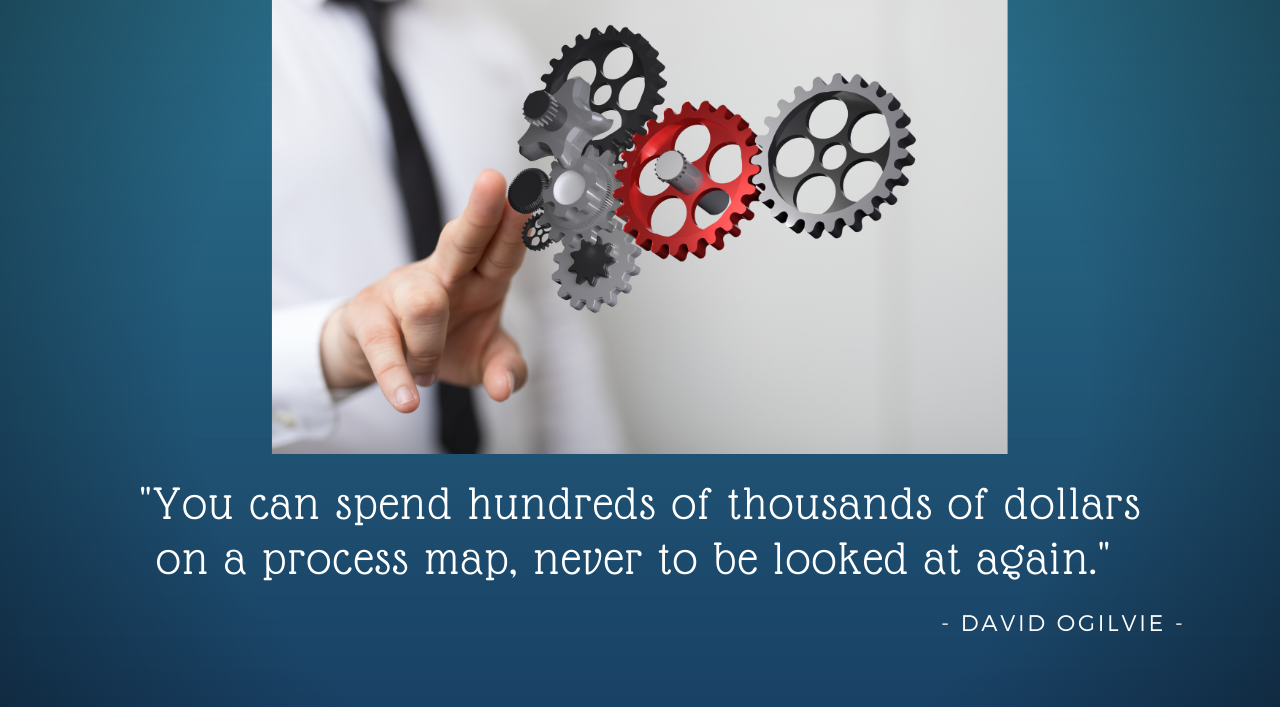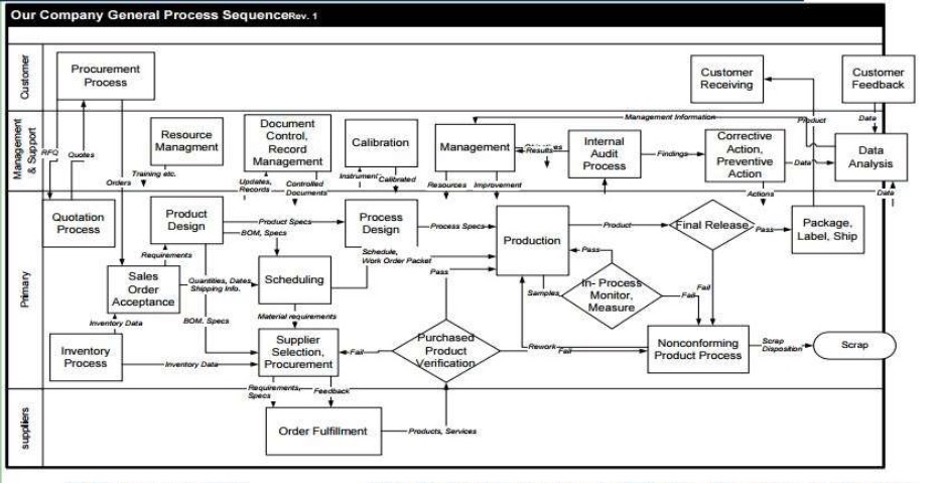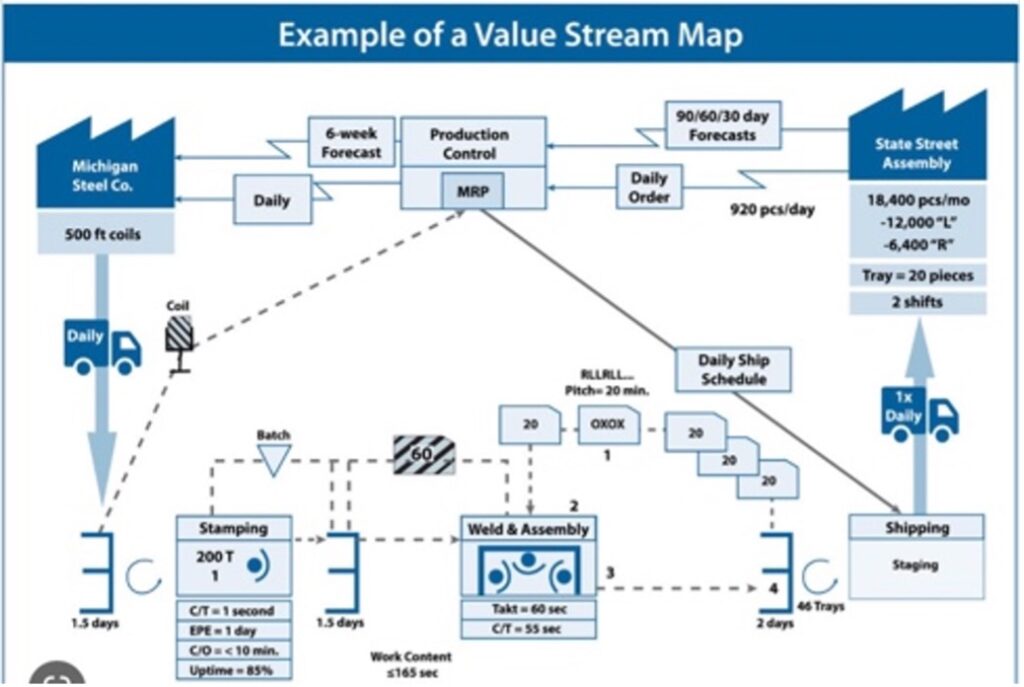
Process or Value Stream Mapping: Hype or Hygiene?
The subject of process mapping came up again recently on a project with which I am involved. There has been a long debate about whether process or value stream mapping is a worthwhile exercise prior to undertaking an ERP project, especially before the selection phase commences.
Before I start, I would like to quickly cover the distinction between process and value stream mapping in case some readers are not across the difference.
A process map is a tool to help visually depict or represent the steps and people involved in a business process. It involves drawing shapes that have specific purposes and represent something very specific. For example, a diamond shape represents a decision. The 4 points of the diamond provide different paths the process can take depending on what the decision is. These maps can consist of a combination of horizontal channels, called swimlanes, and vertical boundaries that often represent inputs, processes and outputs. See the example here:

While value stream mapping has the same goal, it takes a different perspective regarding what it represents. It is a tool used by those who follow the “Lean Thinking” philosophy first captured in western society by James Womack in his book, “Lean Thinking”.
At the fundamental level, it represents the steps in a process but it also includes an estimation of the value created, the information required, other relevant information associated with the step of the process and the frequency at which each step is taken. A classic example of a value stream map (VSM) is shown here:

There is no doubt many of the Big 5 consulting firms, or Big 5 type, make very good revenue out of selling those services to clients.
These big firms will provide you with maps of your current state and/or your future state or, as one calls them, your ‘could-be’ state. None of these maps actually have any relevance to the process that is built into the software you end up selecting. After all, that is going to be the biggest influence on your new process.
The fact these big consulting firms market and sell these services is enough to make me suspicious.
However, here is my take on the topic.
There is a lot of talk about process mapping:
- helping to identify inefficiencies and bottlenecks in current processes. The reality is you simply have to apply “Go To Gemba” and see the bottlenecks for yourself. Bottlenecks have a habit of being easy to see when you know what to look for. “Go To Gemba” loosely translates as go take a look for yourself. “Gemba” (現場) is the Japanese term for “actual place”, often used for the shop floor or any place where value-creating work actually occurs. Lean Thinkers use it to mean the place where value is created. Japanese companies often supplement gemba with the related term “genchi gembutsu” — essentially “go and see”. The bottlenecks are usually obvious.
- providing enhanced visibility. That is, a clear and visual representation of the business process. This is true, it does do that. However, at the cost many of the consulting firms charge for this service, I think there are better and less expensive ways to achieve a visual representation.
- helping to provide better communication by having a common language and framework. Well, every company has a language around these things, so I don’t see any real advantage here.
- reducing risks by identifying them early and mitigating them before they become major issues during an ERP implementation. I actually think they increase risk; especially around encouraging customisations.
After doing this for 25+ years, what I have found is:
- the process is very time-consuming requiring significant effort to accurately document and analyse the processes. This adds up to big dollars.
- there is rarely a value actually assigned to each process step – bearing in mind one of the main reasons you do this is to understand where value is being added in a process. Adding value is defined as the customer being prepared to pay more because an activity or task has occurred. If they are not prepared to pay more for that step, it is a non-value-adding step and efforts should be made to eliminate or automate it. So, with no value being assigned, why bother?
- by mapping your desired future state or ‘could-be’ state, all you are doing is setting yourself up for resistance to the process that has been built into the software you select, thereby creating fertile ground for requests for modifications. They will rarely match exactly. Those modifications themselves are then very poorly justified and handled during the implementation, not to mention the difficulties they create four or seven years down the track.
In the selection phase, it is important to understand what business outcomes you want to achieve within each of the workstreams/departments in your business. Unfortunately, many clients do not fully understand this, and I find myself constantly helping them define that, so the software vendors are well-informed about what must be delivered.
Understanding the desired outcomes does not improve by undertaking a process mapping exercise.
Successful ERP journeys can be achieved without unwarranted expense and effort. The ERP journey is difficult enough on its own without adding further effort and expense for no real benefit. I have been a part of many projects where many hundreds of thousands of dollars have been spent on elaborate process maps before the ERP selection phase – only for them never to be looked at again.
So for me, they are more hype than hygiene.
If you are thinking about starting your ERP replacement journey, please reach out and book a virtual coffee, where we can have a confidential chat about how to start your journey on the right foot. Many irreversible mistakes are made at the very beginning. Let me help you avoid them at the outset.